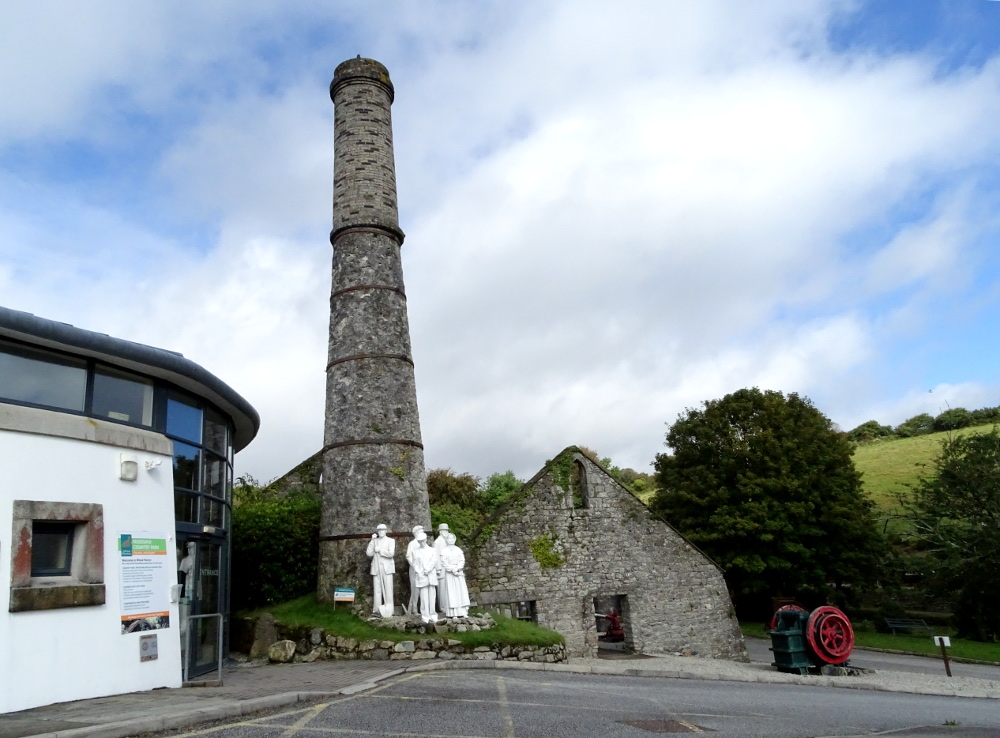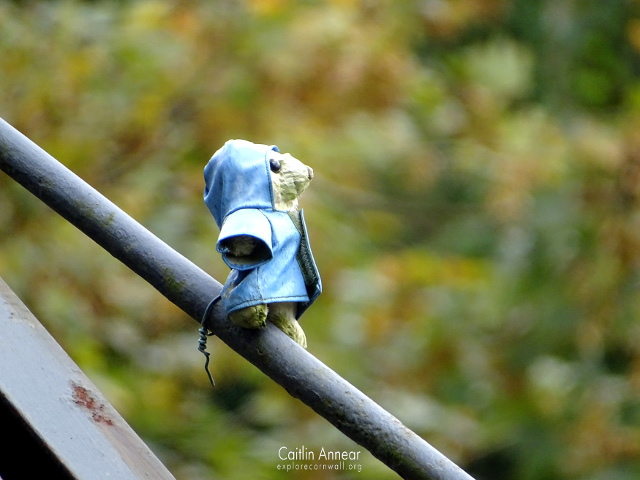On the outskirts of St Austell is the Wheal Martyn China Clay Museum. Once a china clay works of its own, this unique piece of Cornish heritage is a real gem.

Work started here in the early 1800’s, but it’s more famous owner Richard Martyn bought the land in 1790. During this period it was fairly successful, pulling 400 tons of china clay out each year, with another four clayworks being added to the group in the 1840’s, bringing production up to 3,500 tons a year.

Messrs Lovering and Co bought the pit in 1880 to add to their collection of other pits. In 1932 it was again worked alongside two other key clay producers under the name English China Clay International where it continued to operate until 1966. The Wheal Martyn Heritage Trust was established in 1975 in order to help preserve the China Clay history in Cornwall. In 2010 the site was taken over by South West Lakes to ensure its future.
Our tour of the China Clay works started by being told to look out for the tiny bears dotted around the site (very important information!). We then headed through the museum section, stopping to read all of the history of the area. Once leaving here, we followed the path up to the first waterwheel, a 35″ made at the Charlestown Foundry in the 1880’s to pump slurry It was restored in 1976 and was on the move when we stopped by.

Heading up the hill, the next section contains the small railyard, with the remains of a locomotive, two cranes and the wagon sheds. After examining the area we heading inside the bottom of the sheds to learn more about the uses of China Clay. This then led up to the pan kiln and linhay which was under renovation.
The path up the hill continued onto another waterwheel, this one an 18″, erected in 1902 to pump slurry around the site. Following the path around to the right takes you past Wheal Martyn’s drags, Blueing House and settling pit. The ponds are the unique blue colour keenly associated with the china clay industry.

Back around at the second wheel, we following the path up to the viewing point. This includes the Greensplat and Wheal Martyn China Clay pits currently being worked by Imery’s Minerals Ltd. Once we’d watched the different vehicles drive up and down a bit we followed the path back until it joined the woodland walk that heads out to the right;this passes by the unique pumping engine house of Gomm China Clay Works. This path winds through the woods and also takes you past the remains of a whim engine.
Access is available to everyone through the ticket office. Some of the paths around the workings may not be suitable for those with mobility issues.
The museum has toilet facilities and a really lovely little cafe where Scott and I had a great lunch (and cake!).
There’s a small free car park.
Imerys Minerals Ltd (2013) A report on the completed acquisition by Imerys Minerals Limited of the kaolin business of Goonvean Limited. Available at: https://assets.publishing.service.gov.uk/media/55194b4d40f0b614010002cb/131010_final_report_excised.pdf (Accessed: 21 December 2019).
Nance, D., Brown, K. and Clarke, T. (2019) A Complete Guide to the Engine Houses of Mid-Cornwall. Lydney: Lightmoor Press.
Smith, J. (1999) Wheal Martyn, Carthew and Archaeological Assessment. Truro. Available at: http://map.cornwall.gov.uk/reports_event_record/1999/1999R072.pdf (Accessed: 21 December 2019).
Wheal Martyn (2019) The History of Cornwall’s China Clay Heritage. Available at: https://www.wheal-martyn.com/about-us/our-history/ (Accessed: 20 December 2019).
Wheal Martyn (no date) ‘Signs at Wheal Martyn’.









